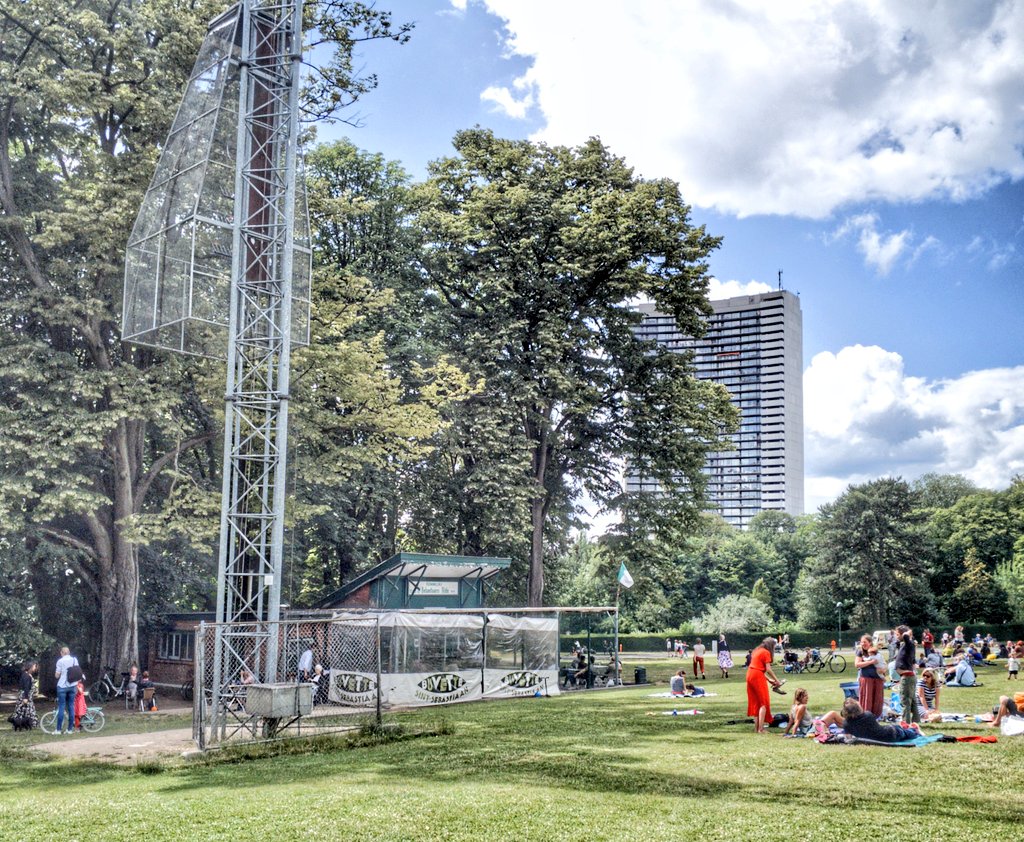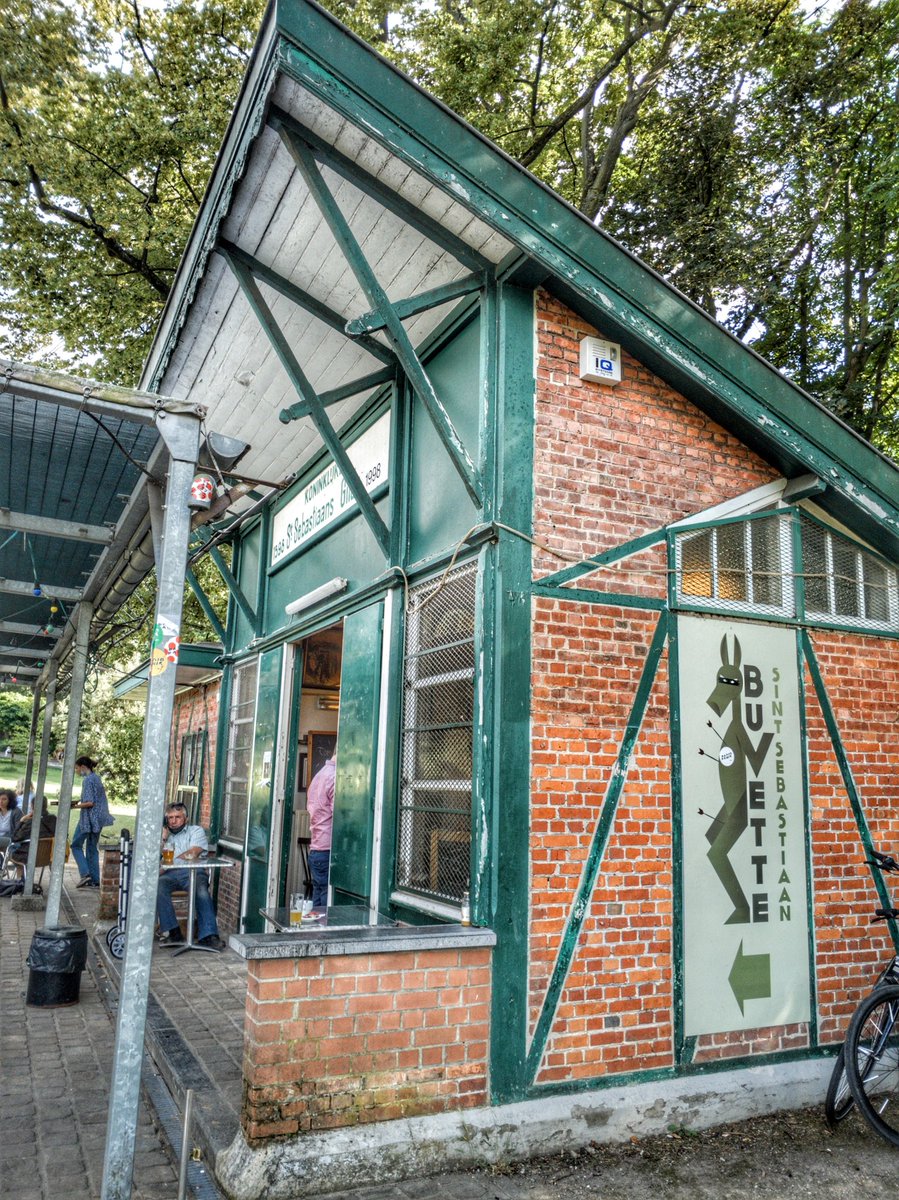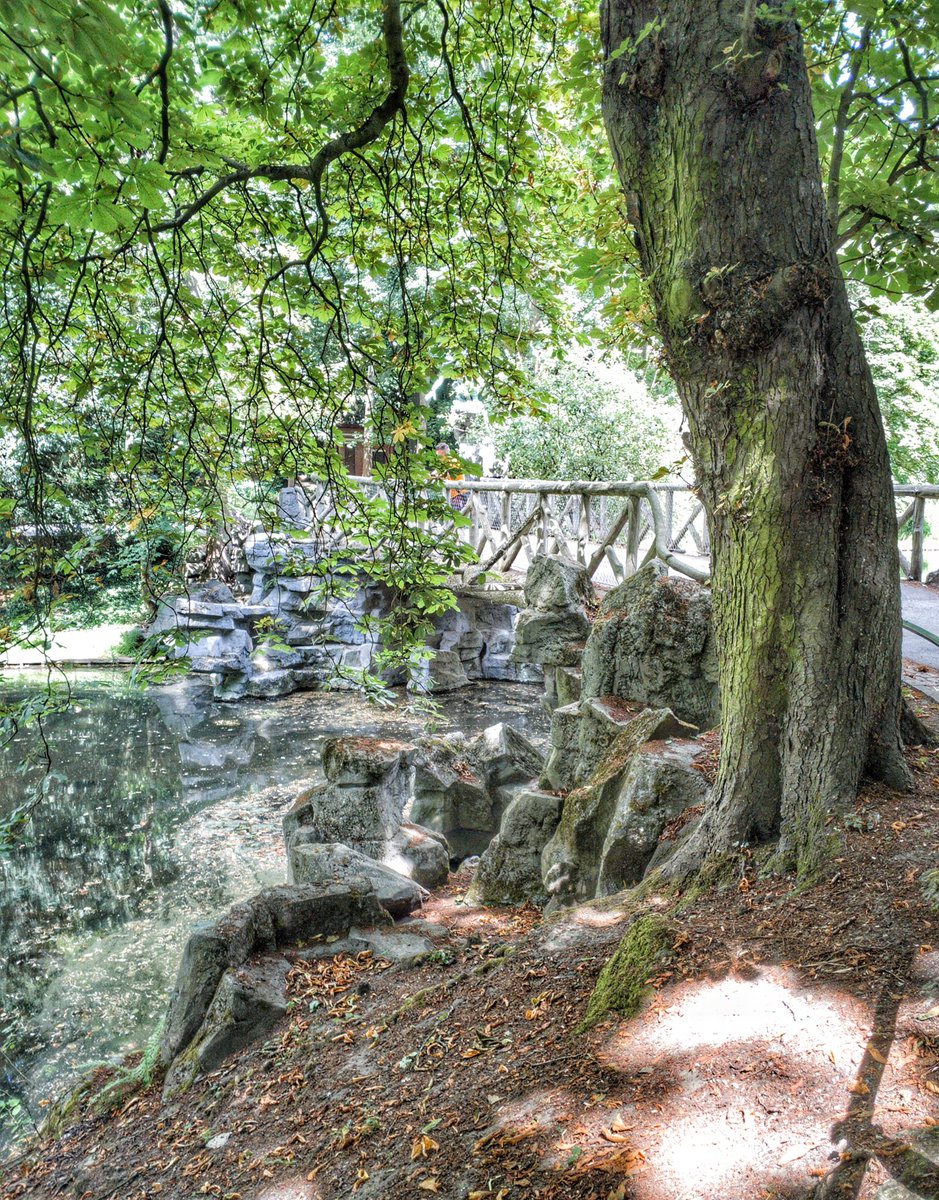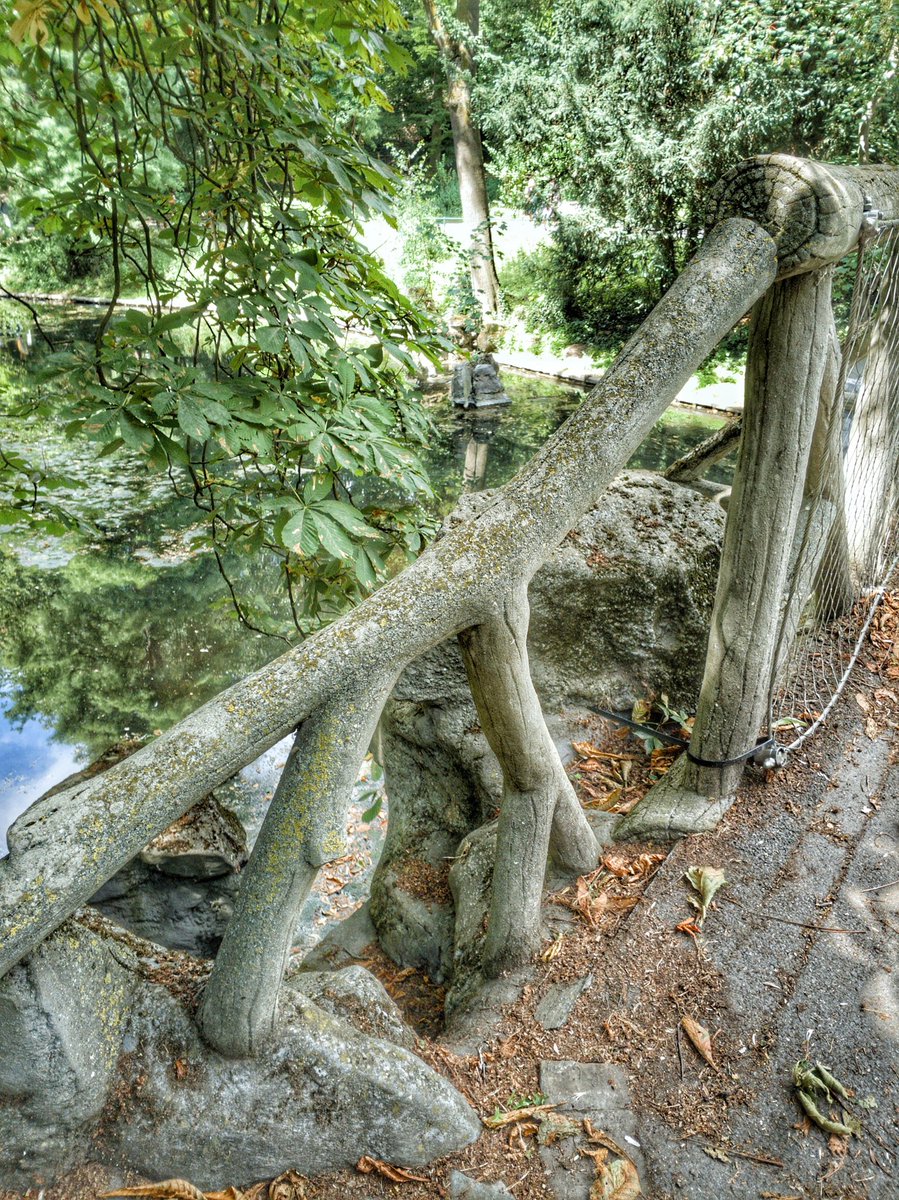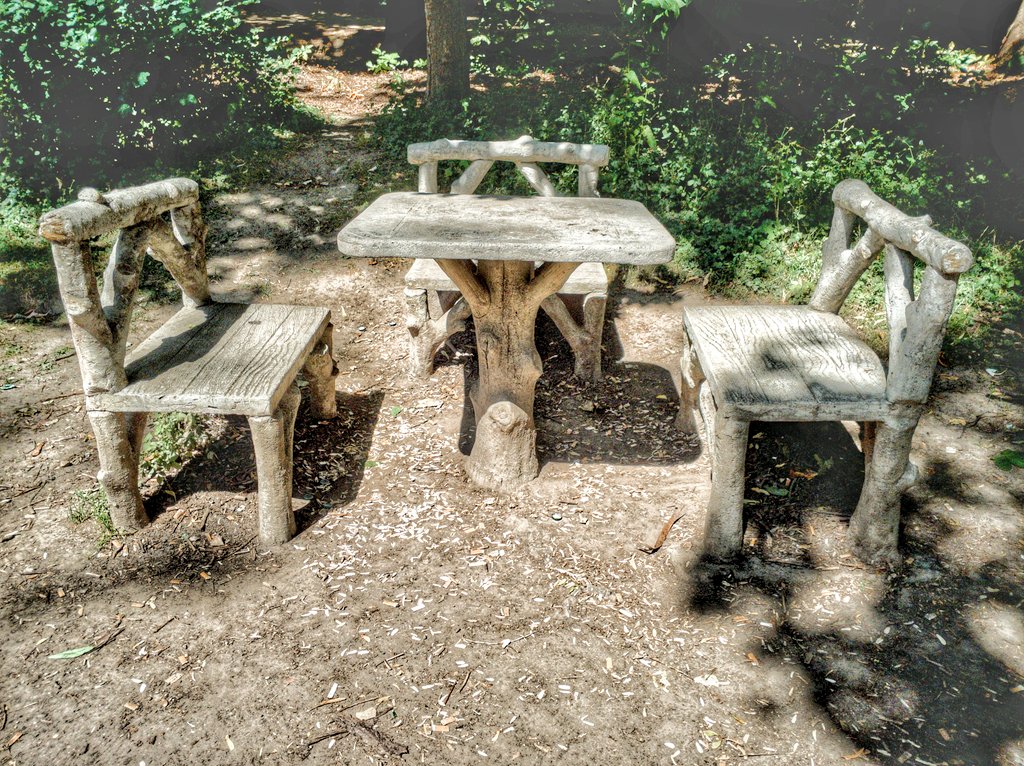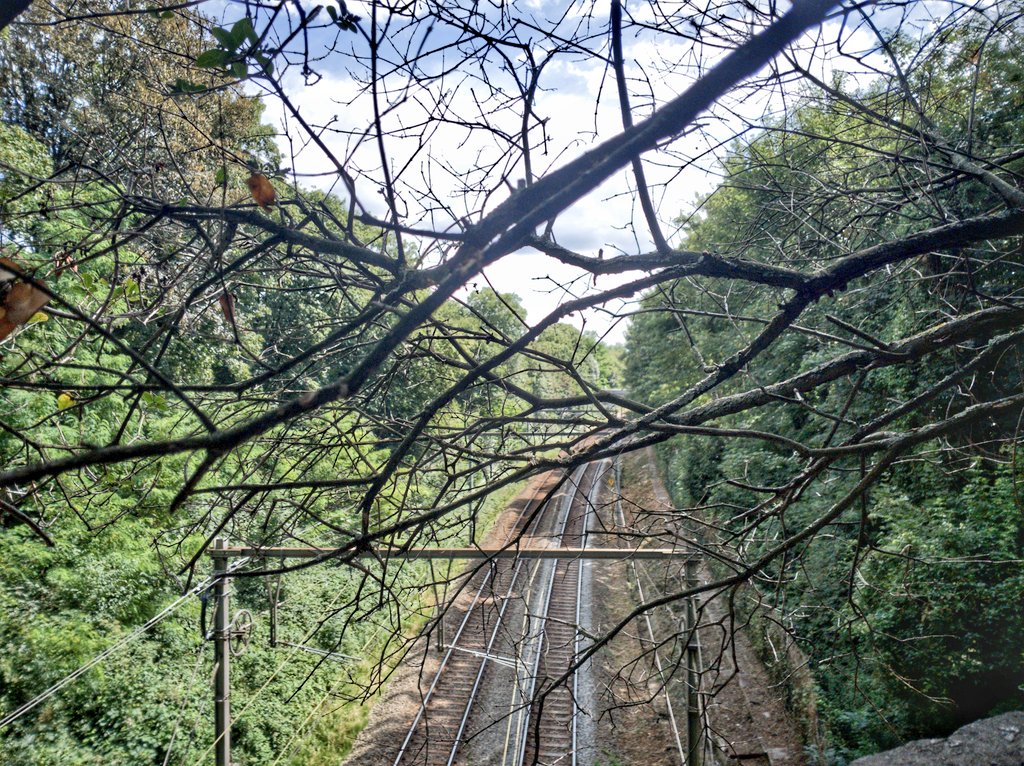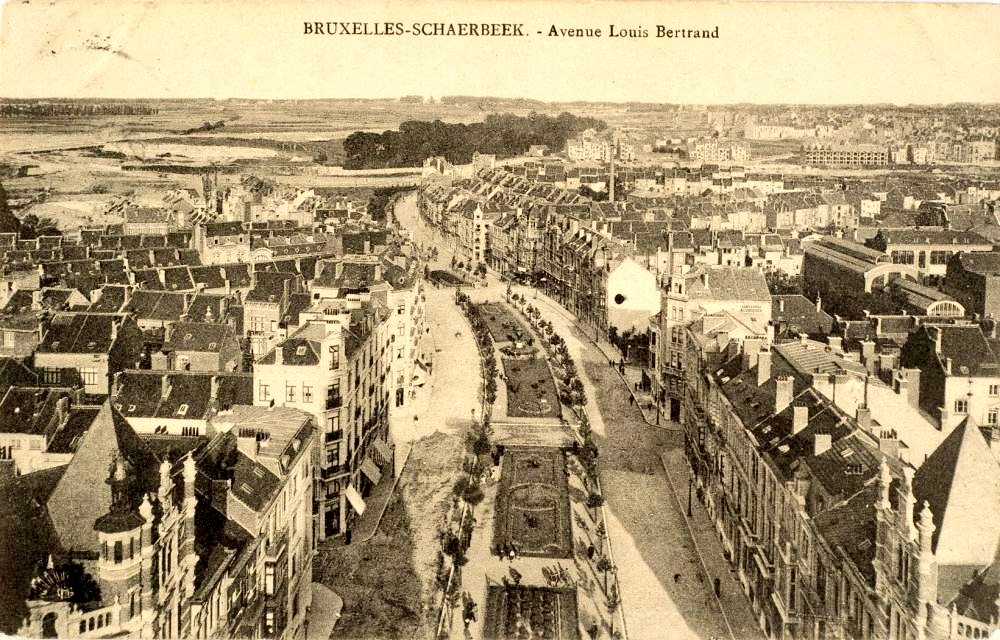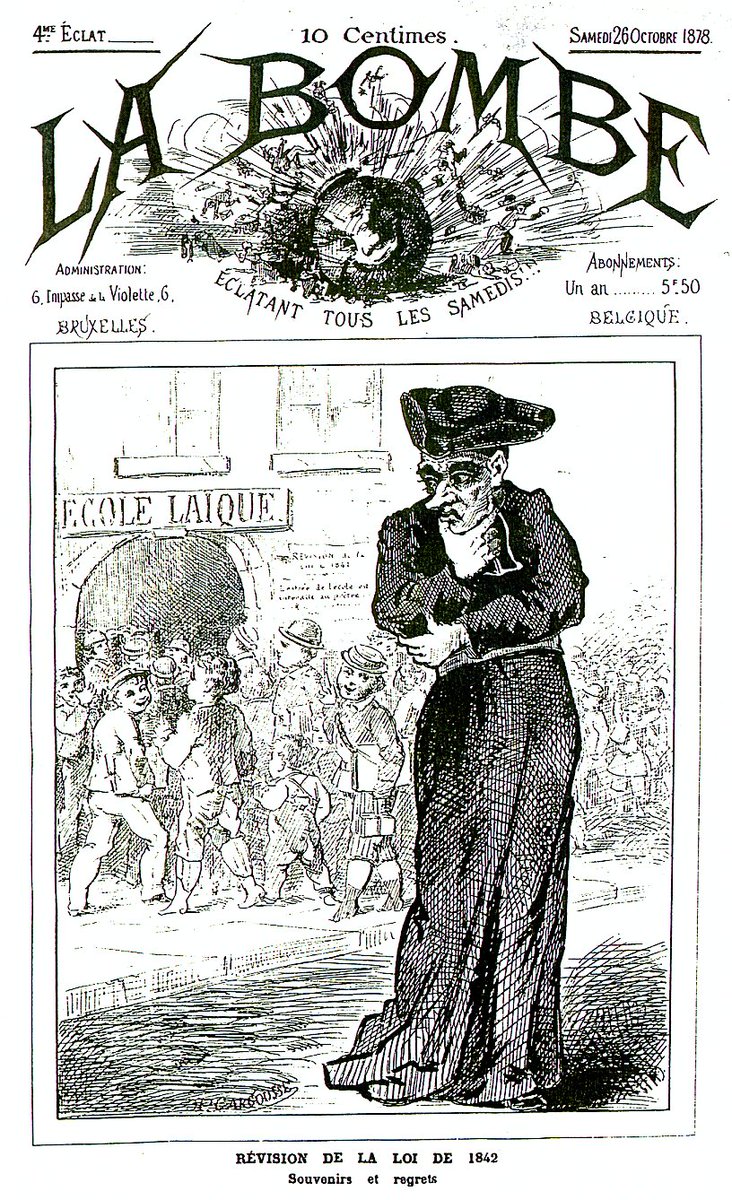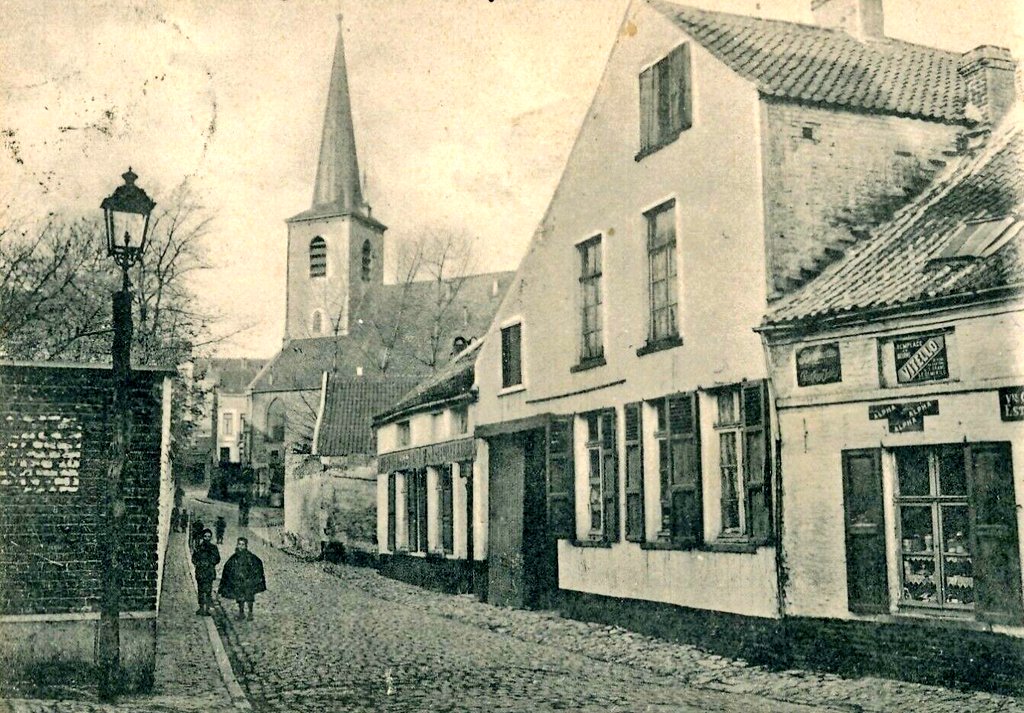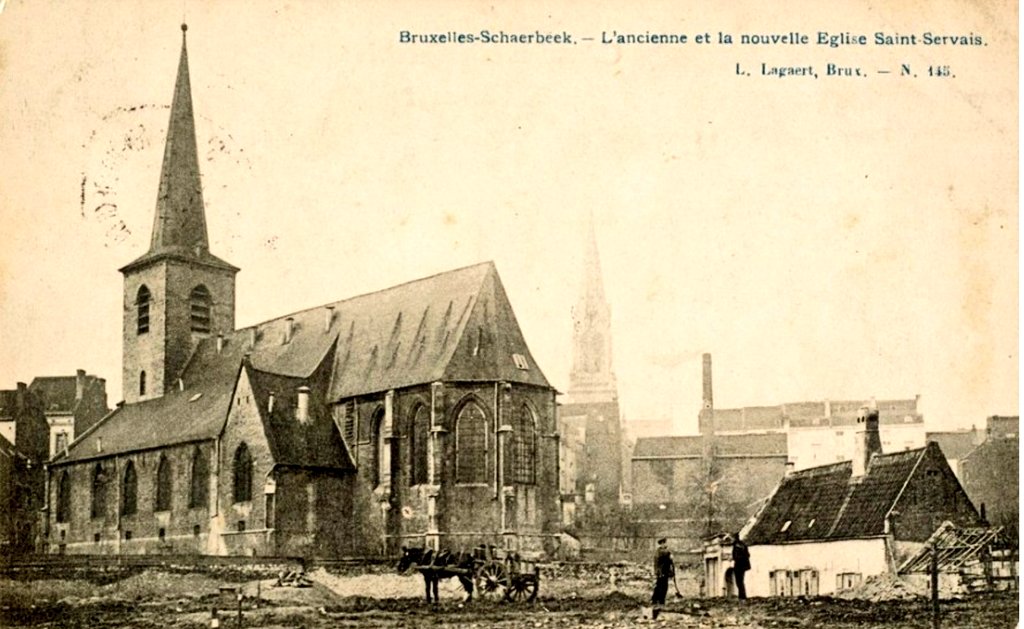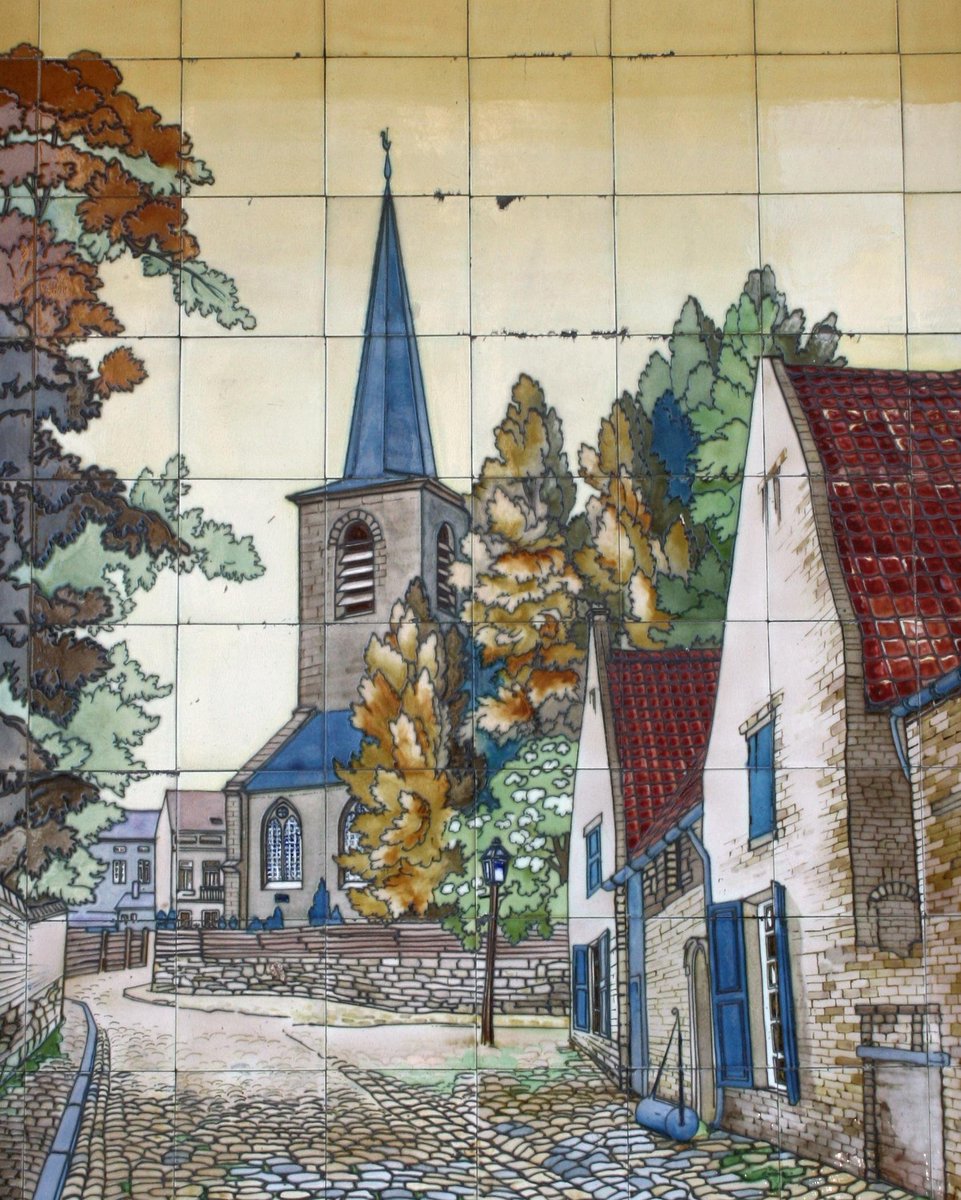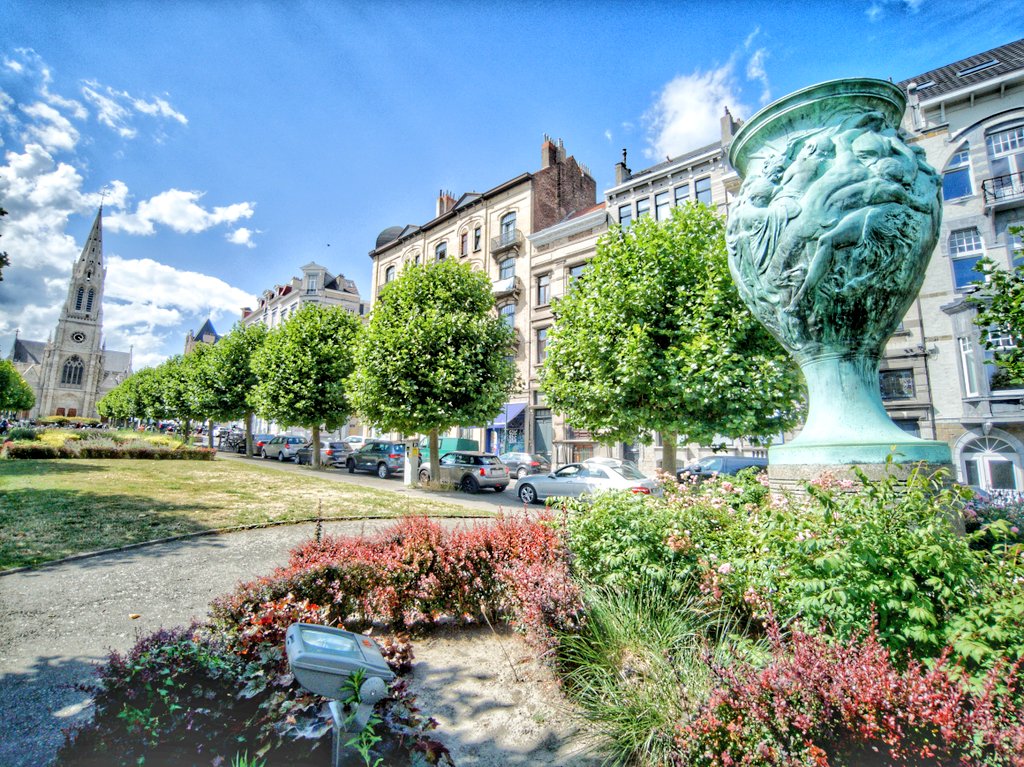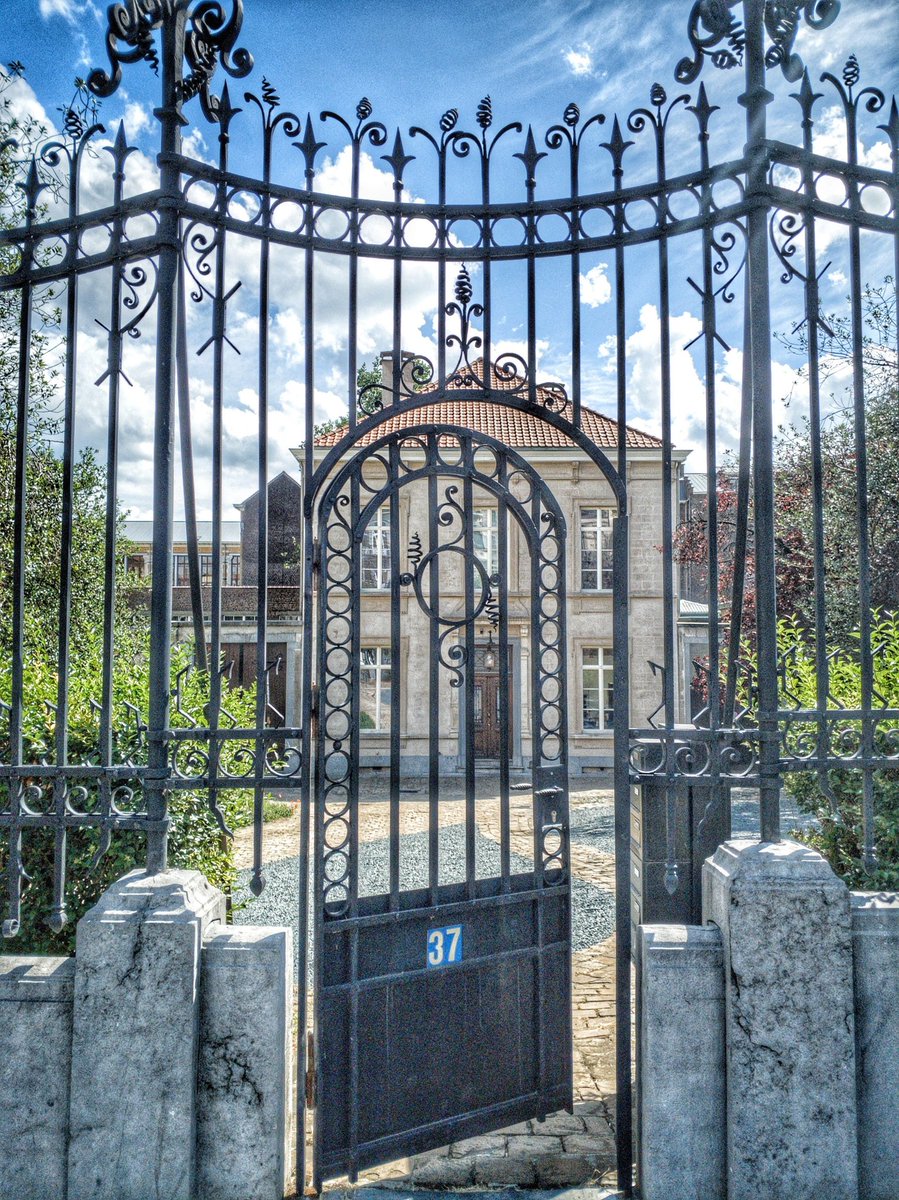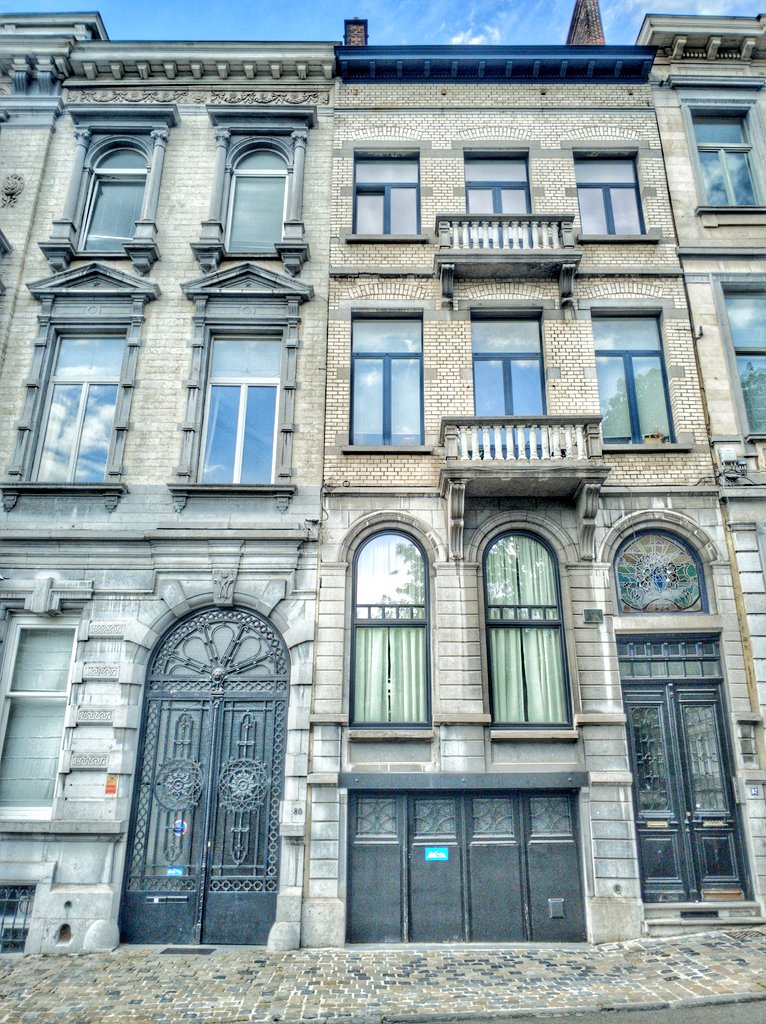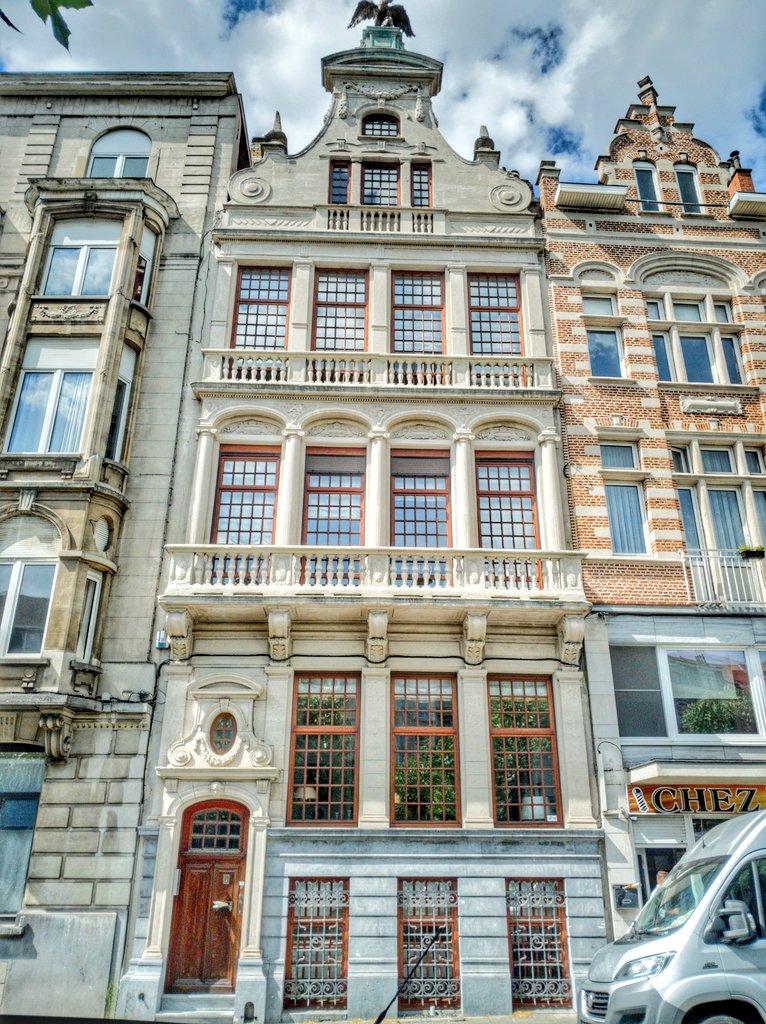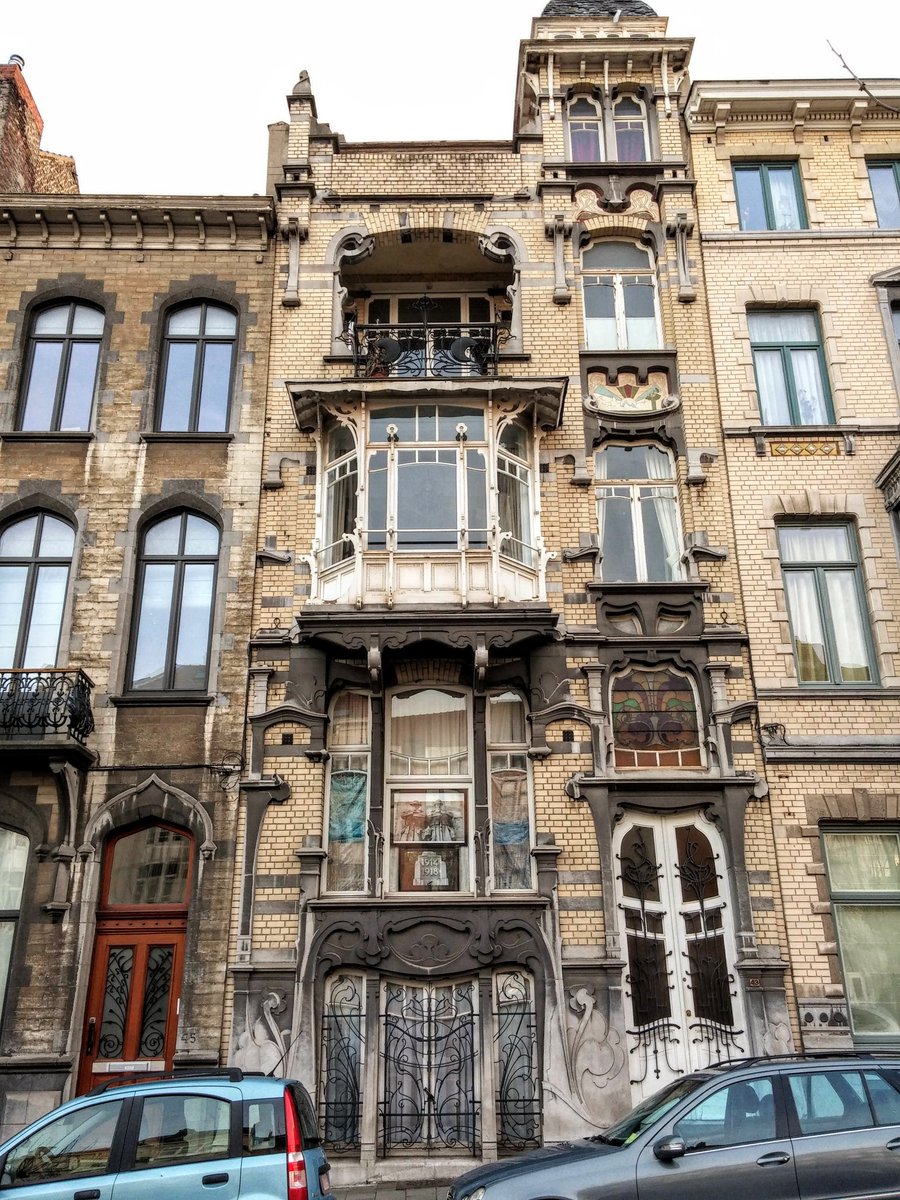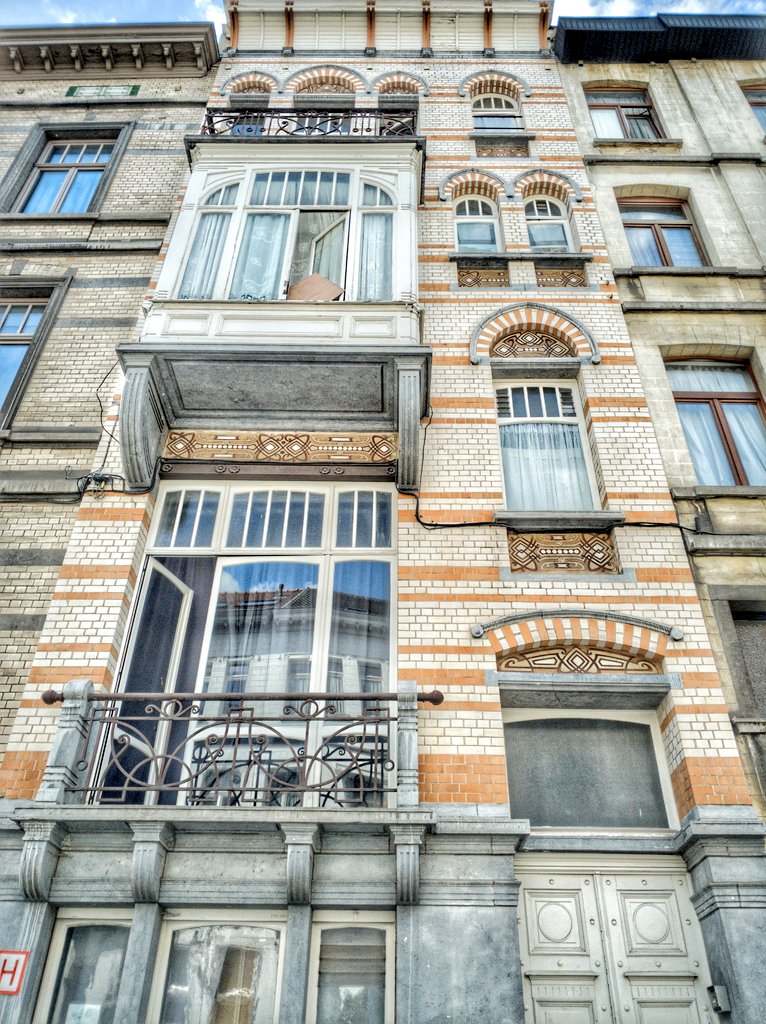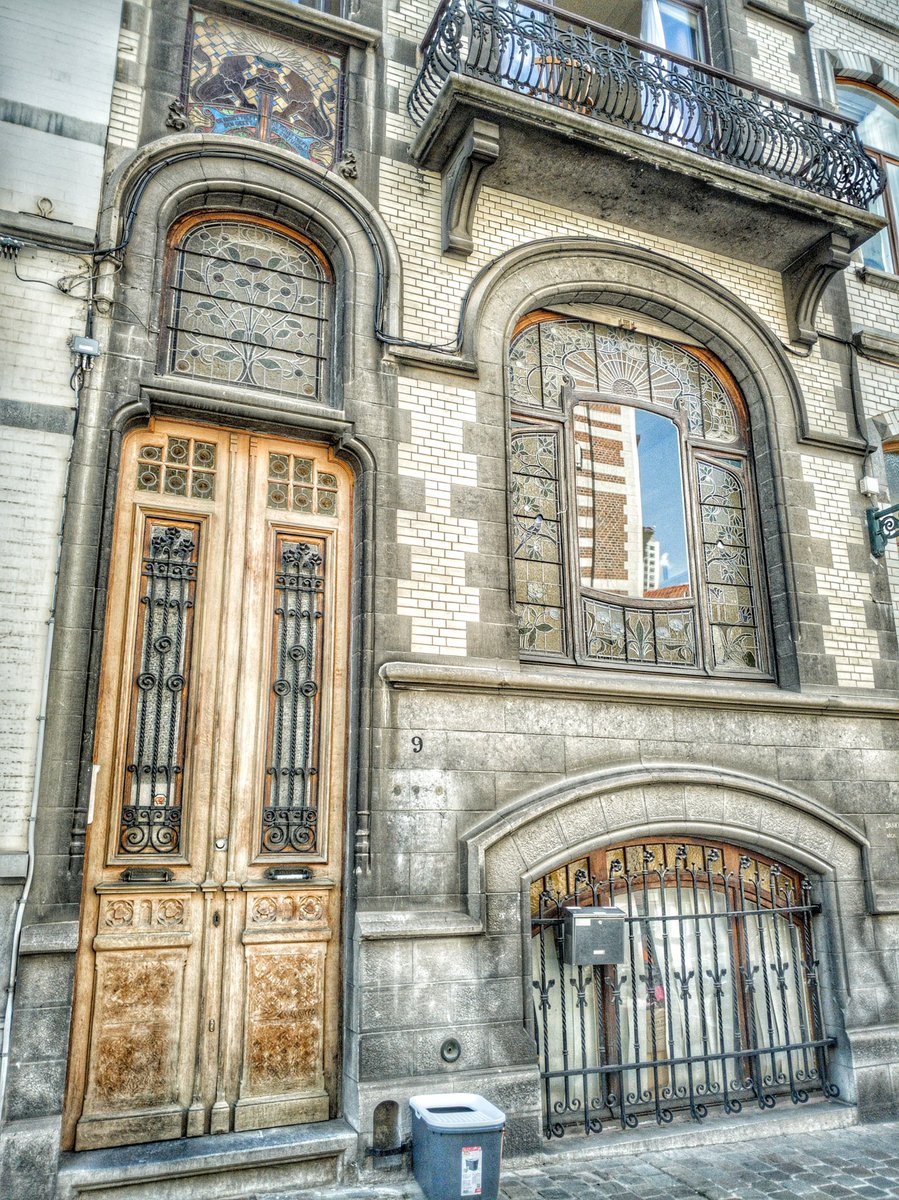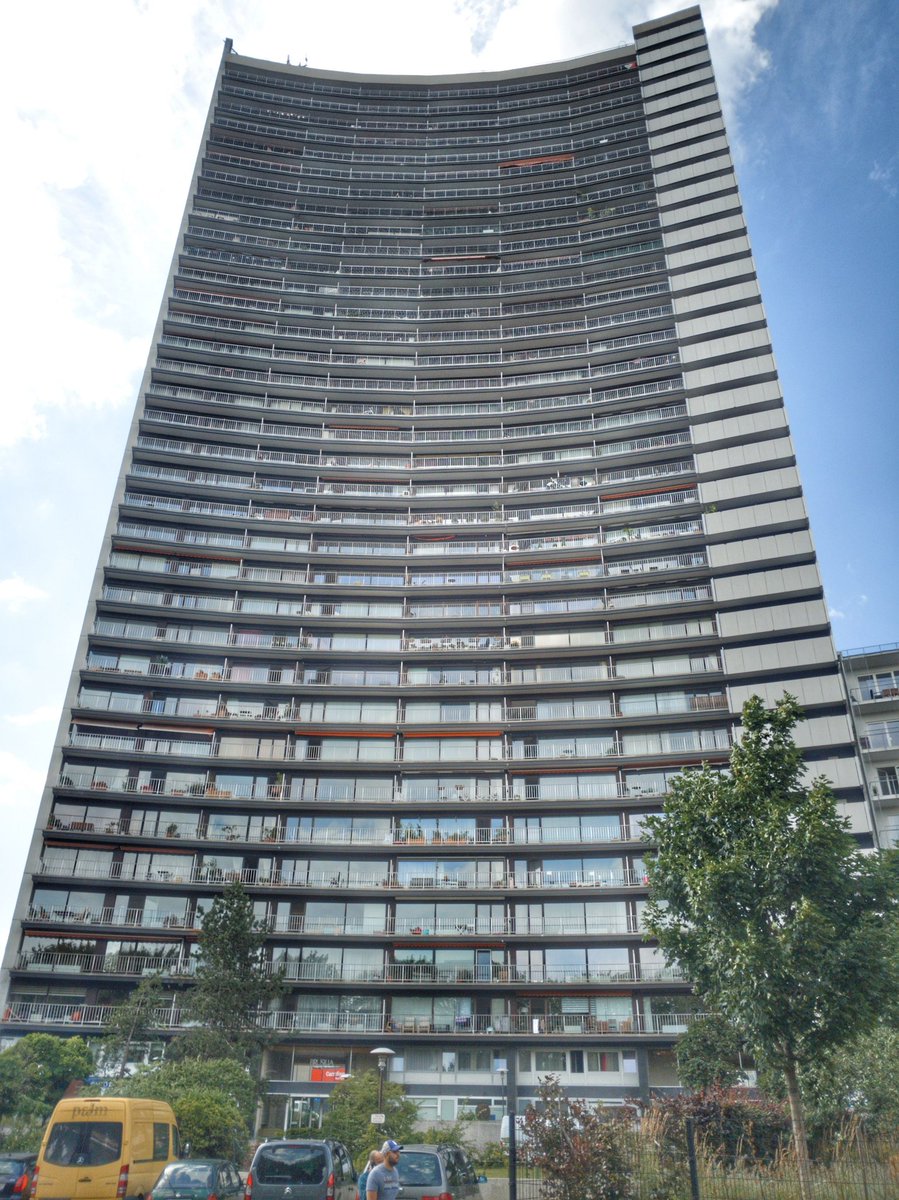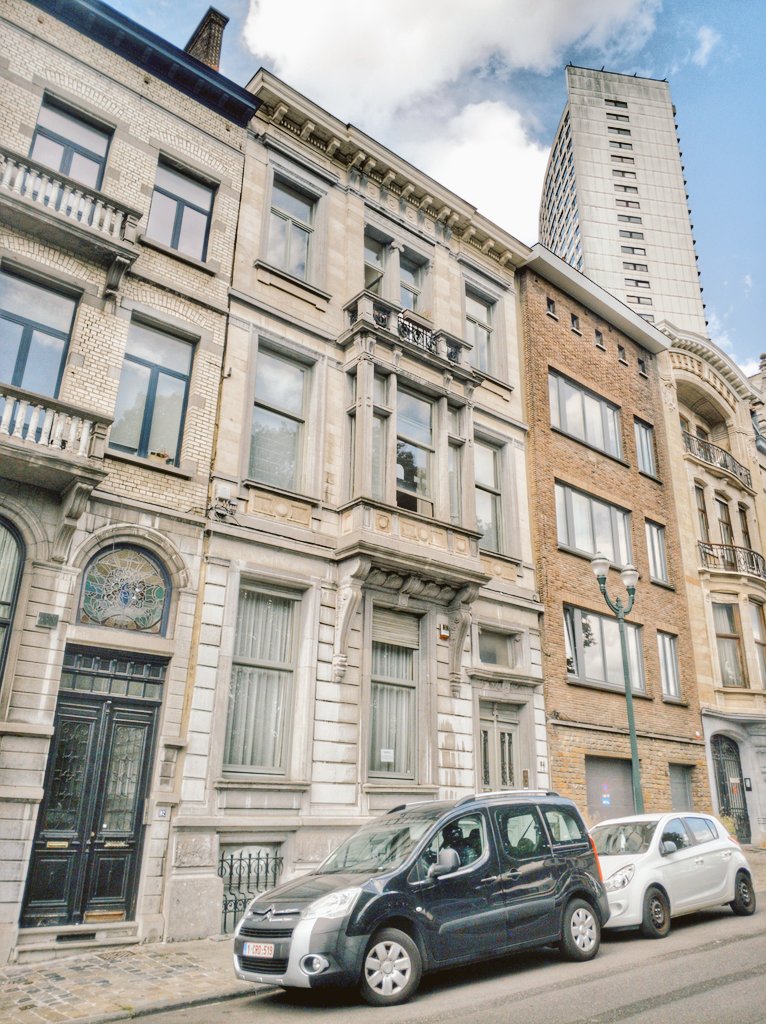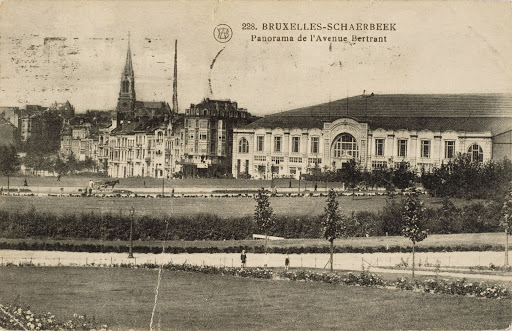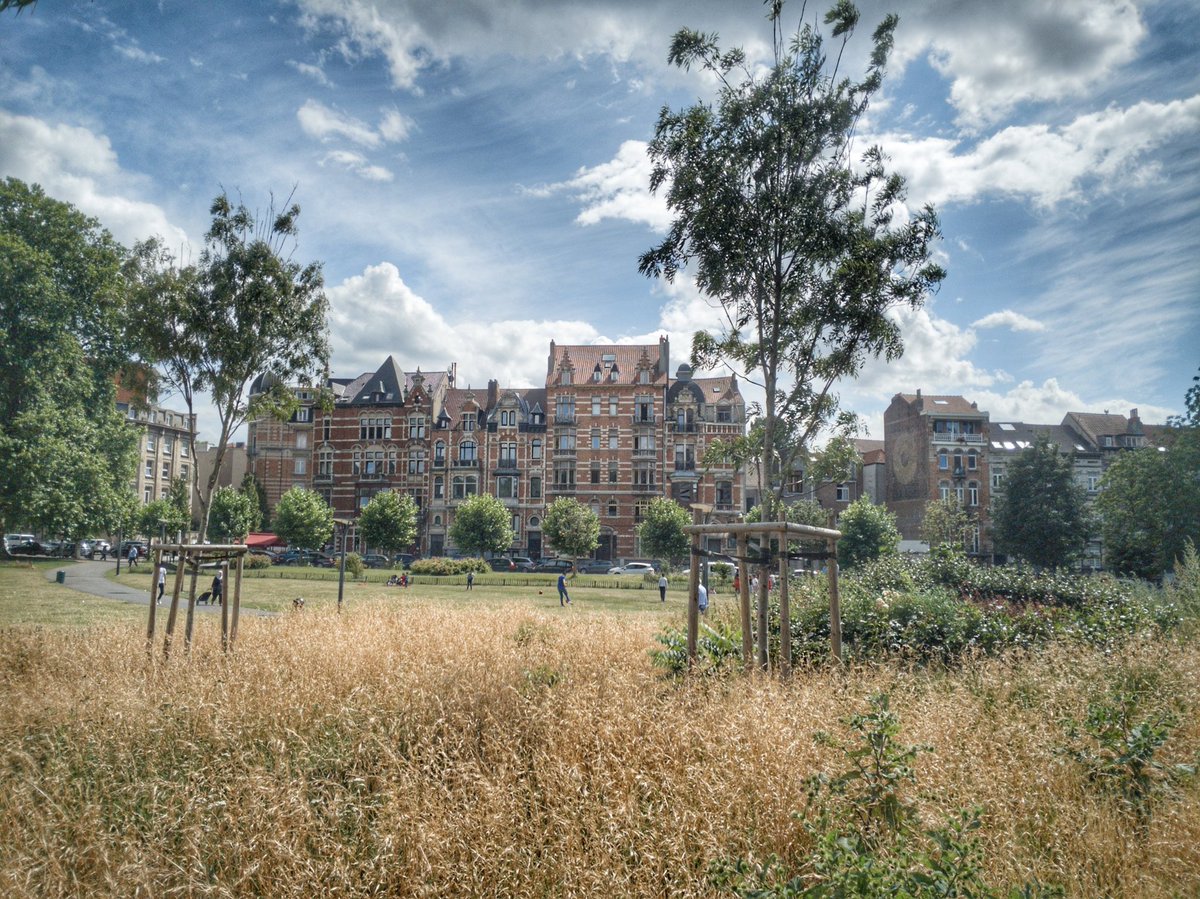Parc Josaphat Walk part II. From L-R, the vertical archery range, the clubhouse of the Guild of Archers of St Sebastian (est. 1598), perfect for socially-distanced Brasserie de la Senne beers on the grass, and Brusilia, until recently the tallest apartment block in Belgium.
The clubhouse dates from 1930 and has recently been associated with Brussels brewery Brasserie de la Senne. Their designer has depicted St Sebastian as a donkey, a symbol of Schaerbeek where the park is located.
I& #39;m a big fan of the late C19 fashion for creating fake alpine landscapes and unconvincing features in concrete, shaped to imitate wood. Parc Josaphat has both.
There is even a table for a picnic à trois done in the same style but I think this is a recent addition. I enjoyed some empanadas with salsa here yesterday.
There& #39;s an easy-to-miss railway line that passes through Parc Josaphat. It was planned by a British firm, la Grande Compagnie de Luxembourg, in the 1840s as the missing link in the rail connexion between Britain and its empire, via Ostend and (eventually) Trieste.
The 1840s UK investors wanted a rail link to India via Suez that avoided France. In 1869 however, they sold it... to the French. The Belgian government, wary of Napoléon III& #39;s intentions, blocked the sale and acquired it instead. Investment screening wasn& #39;t born yesterday.
The & #39;British& #39; rail line cut through Schaerbeek N-S and left the undeveloped, rural E part of the commune on the wrong side of the tracks during the Brussels real-estate boom. Something had to be done to secure the tax base. Enter avenue Louis Bertrand.
The Belgian state, by now owner of the line, finally agreed to move it further E in Schaerbeek following (broad brush strokes here) some of the political arbitrage between Catholic and liberal politicians that characterised late C19 Belgium (please don& #39;t @ me about this).
The new buried railway in the park spelled the end of the line for the medieval Schaerbeek village, which was replaced by the 40m-wide avenue Louis Bertrand prestige project. The plans were signed off in 1898, though work only started in 1903 when the railway work was complete.
The new church of St Servais on chaussée de Haecht coexisted for about 30 years with its medieval predecessor, deconsecrated in the 1860s and then used as a drawing school. Artists and Catholics fought to preserve it but it was demolished in 1905.
The council said the architectural loss would be more than compensated by the quality of the buildings on the new avenue, which had to be a minimum of 6 metres wide and for which prizes were awarded for the best facade. A tiled depiction of the old church survives on one of them.
To show there were no hard feelings towards the faithful, Schaerbeek council named the street after the founder of the Belgian Workers Party and placed a vase representing a bacchanalian orgy on the site of the demolished church& #39;s choir.
The presbytery of old St Servais survives opposite the rude pot. To the left you can glimpse the buildings of the spectacular art nouveau secular school built by architect Henry Jacobs (who also designed the base for the bacchanal). Next door is the Schaerbeek Beer Museum.
The architecture on ave Louis Bertrand ranges from standard prosperous Belgian through Grand Place fantasy Flemish to art nouveau.
A huge project like avenue Louis Bertrand was catnip to architects and some built themselves houses in the side streets to showcase their fayre. Here are two of them.
Le client est roi of course and their origins are immaterial: the facade of Albert Dankelman& #39;s house depicts the Walloon cockerels and the Flemish lions. & #39;De kunst treft den geest.. De kunst treft de zintuigen& #39; (art touches our spirit, art touches our senses, cash preferred).
At the bottom of Louis Bertrand is Brusilia. There were meant to be two towers here but the oil shock intervened. To my mind, it& #39;s no flashier or needier than the older houses it dominates. It was once the Palace of Sport and the Rolling Stones played here is the takeaway fact.
Avenue Louis Bertrand was listed as an ensemble by the Brussels regional government in January 2020. FIN
https://www.rtbf.be/info/belgique/detail_schaerbeek-l-avenue-louis-bertrand-une-des-plus-majestueuses-arteres-de-la-capitale-est-classee?id=10420679">https://www.rtbf.be/info/belg...
https://www.rtbf.be/info/belgique/detail_schaerbeek-l-avenue-louis-bertrand-une-des-plus-majestueuses-arteres-de-la-capitale-est-classee?id=10420679">https://www.rtbf.be/info/belg...

 Read on Twitter
Read on Twitter